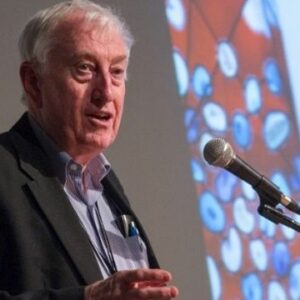Peter C. Doherty is a well-known Australian scientist. He won the Nobel Prize in Physiology for finding out how the immune system can tell when a cell has been infected by a virus. His work in the area of the immune system has been very important. He was born in Brisbane and went to the University of Queensland, where he got a Master’s degree in veterinary science. He moved to Scotland in order to get his PhD in Pathology from the University of Edinburgh, which he did in 1970. He is known for discovering cell-mediated immune defense, which is mostly used to protect against viruses. He is a member of the faculty at the St. Jude Children’s Research Hospital in Memphis and at the University of Melbourne’s Department of Microbiology and Immunology. He has written a number of articles, given a lot of public talks, and taken part in a number of scientific discussions.
Early years and childhood
Peter C. Doherty was born in Brisbane, Queensland, on October 15, 1940, to Linda and Eric Doherty. Ian is his younger brother.
Doherty went to Indooroopilly State High School when he was young. He was born into a traditional, religious family. After he finished school, he went on to get a Bachelor of Science in Veterinary Science in 1962.
In 1966, he got his Master’s degree from the University of Queensland, which took him four years. After that, he moved to Scotland and got into the University of Edinburgh so he could get his Ph.D. in Pathology.
Peter Doherty’s Career
In 1970, when he got his Ph.D., he went back to Australia and started doing research at the John Curtin School of Medical Research in Canberra.
While he was at John Curtin School, he worked with Rolf Zinkernagel to study the role of T lymphocytes in mice that had been infected with a certain type of virus that can cause meningitis. They came to the conclusion that the brain cells of mice infected with this virus died because of how strong the immune response was.
To test the theory, they mixed T lymphocytes from infected mice with virus-infected mouse cells. They found it interesting that the T lymphocytes did kill the virus-infected cells, but only those from a strain of mice with the same genes. The T lymphocyte didn’t care about those from other strains.
His research was mostly about the immune system and how immune cells protect the body from viruses. His research showed that an infected cell had to show two signals before T cells would kill it. The first was the piece of the invading virus that the cell showed on its surface, and the second was how the T cells recognized their target antigens in combination with major histocompatibility complex (MHC) proteins.
The two researchers found that the MHC, which was once thought to be in charge of rejecting incompatible organs during transplants, is also in charge of fighting meningitis viruses.
From 1975 to 1982, he worked as a teacher at the Wistar Institute in Philadelphia. From 1982 to 1988, he was the head of the Department of Pathology at the Curtin School in Canberra.
In 1988, he became the head of the Immunology Department at St. Jude Children’s Research Hospital in Memphis, Tennessee.
He has written many books over the course of his career, such as the semi-autobiographical “The Beginner’s Guide to Winning the Nobel Prize” in 2005, “A Light History of Hot Air” in 2007, and “Sentinel Chickens” in 2012.
At the moment, he works as a faculty member at the University of Tennessee Health Science Center for three months of the year at the St. Jude Children’s Research Hospital in Memphis, Tennessee. He works in the Department of Microbiology and Immunology at the University of Melbourne, Victoria, for the other nine months.
Awards & Achievements
He was chosen as a Fellow of the Royal Society in 1987.
In 1995, he was given the Albert Lasker Award for Basic Medical Research, which is the best medical award in the United States.
In 1996, he and Rolf Zinkernagel won the prestigious Nobel Prize in physiology or medicine for finding out how the immune system recognizes cells that have been infected by a virus.
In 1997, he was named the Australian of the Year. In the same year, he was made a Companion of the Order of Australia.
Personal History and Legacies
In 1965, he got married to Penny Stephens, who was a student of microbiology. James and Michael, their two sons, are a gift from God.
The Peter Doherty Institute for Infection and Immunity is named after him. The institution is home to a group of infection and immunology experts who are always working to keep infectious diseases from spreading to people.
Estimated Net worth
Unknown.
Trivia
This veterinarian and researcher from Australia is the first person with a veterinary degree to win the Nobel Prize for Medicine.


